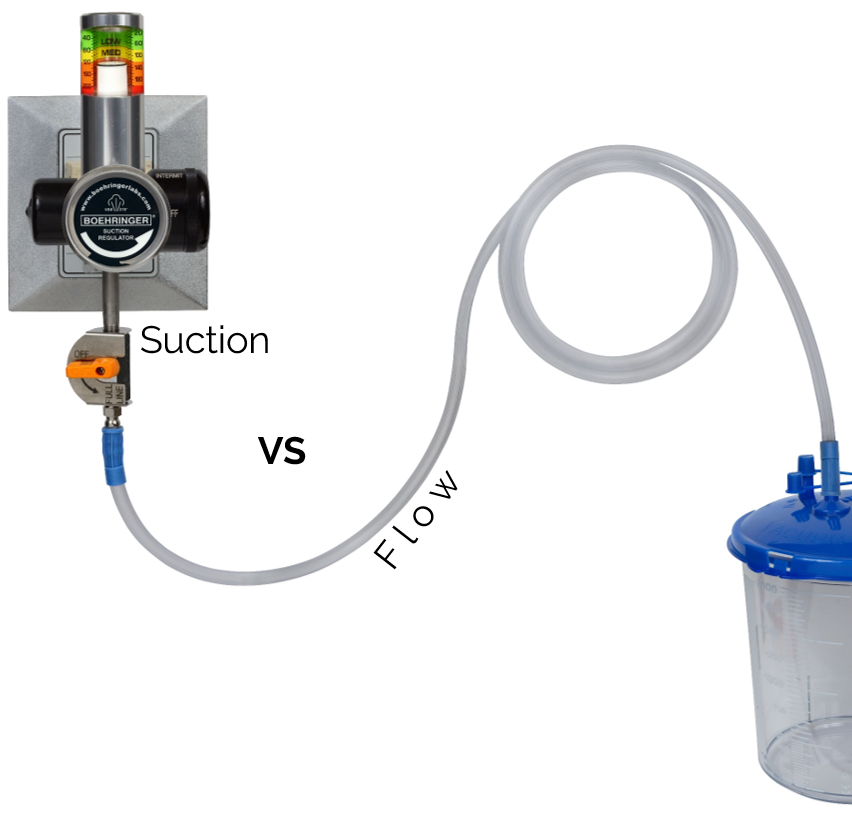In the medical industry, suction access is required in all areas where patients will be cared for. Suction regulators are one of the top five most used medical devices in the hospital environment. In a Code*, suction to clear the airway is vital to patient survival.
While suction is one of the most used treatments in a medical facility, it is also possibly the most misunderstood. Suction settings vary by department and treatment. Settings can range from 20mm/hg for chest drains, 120mm/hg for NG Tube, and Full Line (660+mm/hg) in the OR. Too high of a set point can damage patient tissue, while too low suction results in poor clinical outcomes. The accurate set point is achieved by occluding the suction circuit within a foot of the patient-end of the suction tube while adjusting the suction regulator. Simply turning the regulator adjustment dial to a number on the gauge does not accurately indicate true suction if occluded at the treatment site.
Medical flow is an act of fluid, or air, running smoothly through a tube from patient to collection canister. Flow is affected by the diameter of the tubing, the length of tubing, the height of the collection canister, suction setting, and flow capability of the suction regulator. If desired suction results are not occurring, a natural reaction is to turn up the suction regulator setting. This can be dangerous as the actual suction at the treatment site may be well beyond acceptable limits.
To ensure safe suction in all treatment areas, it is recommended that suction regulators be routinely checked for accuracy and flow capability to ensure patient safety and treatment efficacy.
Looking for more information on solutions for clinical suction? Be sure to check out Boehringer Suction Regulators.
*Two things must work to save a coding patient: suction to clear the airway and defib to restart the heart.
Back to Blog


